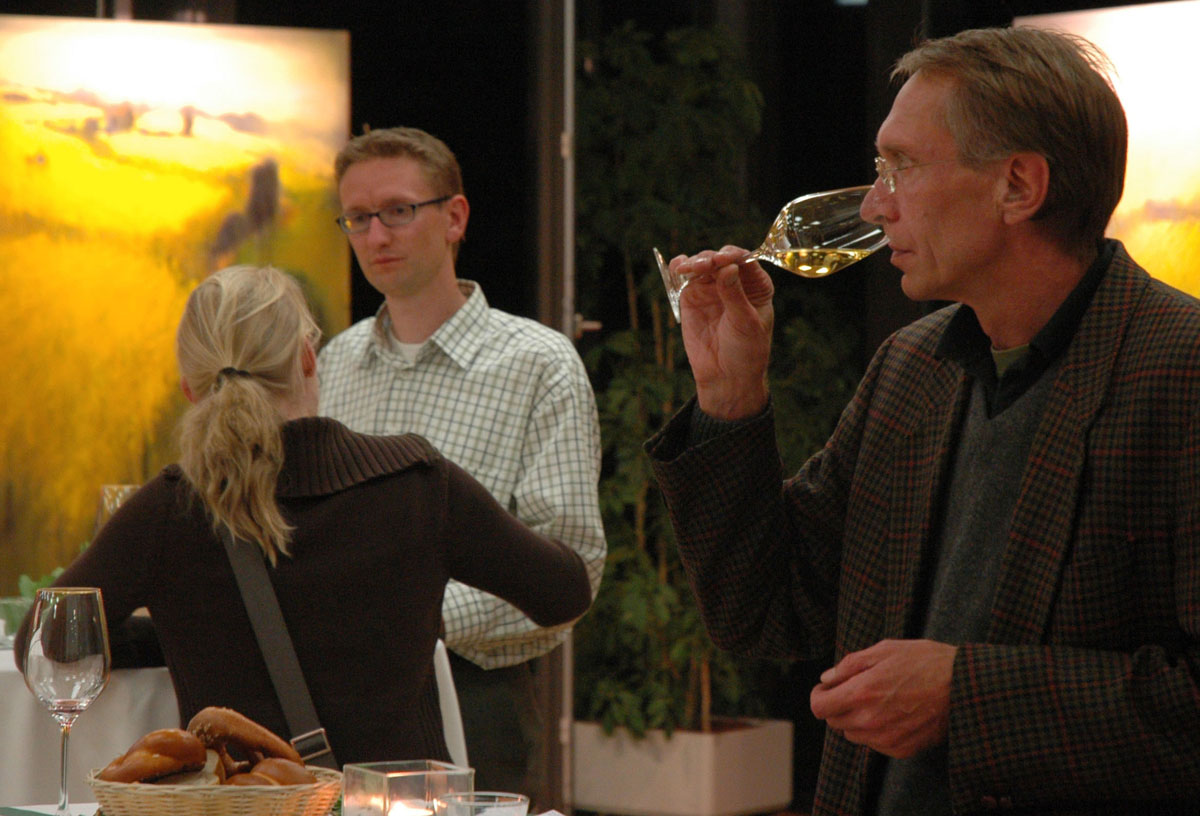Wine & art make easy bedfellows
Berlin, Germany’s capital city has little to boast about. The city is broke and unemployment is rife. Still, the cosmopolitan arty set regularly jets to Berlin to take a look at its edgy art galleries, which thrive on low rents and a never-ending stream of hopeful young artists keen to make a name for themselves. In early September, right at the start of this autumn’s art season, 60 of Berlin’s estimated 400 galleries were pressed into service as tasting rooms, with an average of three different VDP producers serving their wines to paying members of the public. Jancis Robinson, the wine writer, admitted that initially she could not quite imagine how wine & art would work out. In London it could all too easily have degenerated into a sleazy booze-up - provided there would have been enough galleries volunteering for such an event in the first place.
The VDP, Germany’s top growers’ association, apparently did not have much trouble lining up galleries. The gallery owners probably thought: “Hey, these wineries are going to provide free booze for our opening. And perhaps some of the punters in search of rare wines will actually buy our art too.”
It’s hard to tell if acquiring a piece of art for their sitting room was first on people’s minds. Tasting wines certainly was. This was their one and only chance to savour the VDP’s wines, which mostly represent small volumes. The VDP’s 200 members harvest only 2 percent of the total annual German crop and cultivate 5 percent of the total German area under vines, which is equivalent to about 5,000 ha or 30 million bottles (total sales: EUR 290 million).
Although the VDP’s finest wines are hardly ever rated by America’s wine guru Robert Parker, their new vintages can sell for EUR 3000 per bottle at the VDP’s annual wine auction, usually held at the end of September.
Spending a Sunday afternoon in the company of people who had each paid EUR 35 for the privilege of only having six hours access to galleries and wines, made me realise that the wine guys have achieved something that brewers still haven’t thought about: they have clearly established a link between wine and high culture.
Which means that brewers face a Herculean task should they want to rectify the picture that beer is for loutish lads while wine is for well-behaved grown-ups. And if afterwards they still have any perseverance of Sisyphusian proportions left they might consider tackling the public stigma that beer is “industry” and hence a commodity, whereas wine is “agri-culture” (!) and therefore something of great cultural value.
The VDP’s anniversary celebrations proved that wine and art make for easy bedfellows. The reason is simple: their followers have a real way with words. Actually, the funny thing is that the wines or the art in most cases are an end in themselves, not a means to an end.
Now picture a London pub, one where they are selling speciality brews: How long will the conversation between two blokes revolve around the beer? Ten seconds?
If sommeliers and wine lovers know how to talk your socks off, it’s not because they had a misspent youth as used cars salesmen. My guess is that it’s down to wine writers like Jancis Robinson, Hugh Johnson and even Robert Parker (he of the Parker Points), who have provided their readers with a language to discuss the wines they are tasting: not just describe what it is that they have in their glass but what it does to them, too (and I do not mean the effect of inebriation!).
Irrespective of whether it’s a trophy wine selling for hundreds of Euros or just a nice bottle of wine that retails for EUR 10 in a supermarket, wine stimulates conversation and an instant rapport among strangers who discover that they share something that gives them pleasure. Which is just like art.
The English beer writer Michael Jackson strove to do the same for beer. Alas he is no more. On a day like this, when wine aficionados from all walks of life have such a good time talking about the humble fruit of the vine, I still feel the pang of loss. Where are the beer writers who can keep up Michael’s good work?
At the Craft Brewers’ Conference in Chicago this spring, brewers and friends met in the great entrance hall to Chicago’s Field Museum of Natural History where they were served interesting beers, fine cheeses and other gourmet foods. I thought this was a nice idea since it underlined beer’s rightful place as one of the crowning moments in the long evolution of human culture.
For the time being wine & art make easy bedfellows. But, beware: beer could be hiding in the wardrobe!


